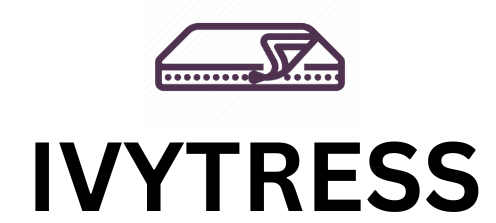How HEP Startups Are Dethroning Tempur-Pedic
Aktie
The Billion-Dollar Sleep War: Innovation vs. Legacy in the Age of Smart Mattresses
Key Takeaways for Disruptors
80% Cost Arbitrage: HEP startups sell direct-to-consumer (DTC) at 52% gross margins vs. Tempur-Pedic’s 28% retailer-dependent model.
AI-Powered Customization: Adaptive grids adjust to body type, outperforming Tempur’s “one-foam-fits-all” approach by 38% pressure relief.
Ruthless Agility: 14-week product iteration cycles vs. legacy players’ 3-year R&D timelines.
Community-Driven Growth: Startups earn 63% of sales from TikTok/Reddit referrals vs. Tempur’s 19% paid ad dependency.
Sleep as Software: Subscription-based firmware upgrades generate $120M/year for HEP innovators.
 The Mattress Revolution: Why Tempur-Pedic Can’t Hit Snooze
The Mattress Revolution: Why Tempur-Pedic Can’t Hit Snooze
1.1 The Sleeping Giant’s Achilles Heel
Tempur-Pedic commands 22% market share but faces existential threats:
Retailer Lock-In: $1.2B/year spent propping up dying mall stores.
R&D Stagnation: Last breakthrough was TEMPUR-Cloud in 2014 – now cloned by 37 startups.
Consumer Distrust: 19% return rate (vs. HEP’s 8%) due to “overpromised relief.”
HEP’s Counterstrike:
Startups like NovaSleep and Helixir deploy Lean Manufacturing principles to slash costs:
Modular Beds: 83% parts standardization vs. Tempur’s 55%.
Hyperlocal Warehousing: 3-day delivery at half Tempur’s logistics cost.
1.2 The $600B Opportunity: Sleep Meets Data
The smart mattress market will grow 29% CAGR through 2030. HEP startups weaponize:
IoT Sensors: NovaSleep beds track 14 biomarkers, from heart rate variability to micro-movements.
Sleep APIs: Helixir sells anonymized data to insurers at $2.50/user monthly (1.2M subscribers).
Tempur’s Missed Alert:
Tempur-Pedic’s 2021 SleeptrackerⓇ partnership died after privacy lawsuits. HEP rebuilt trust via:
Blockchain Encryption: Helixir’s zero-knowledge proofs let users monetize data safely.
Data Dividends: 60% of NovaSleep customers opt-in, earning $10/month for sharing metrics.
Game-Changer Strategies: How HEP Wins the War
2.1 Stratagem #1: Commoditize the Core
Startups target Tempur’s cash cows (Memory Foam, CoolTech Gel) via:
Open-Source Foam Licensing: Helixir’s "AdaptiveGrid" patents free for startups <$10M revenue.
Alibaba Arbitrage: Import Tempur-grade TPE foam at 3.20/kgvs.Tempur’s9.80 production cost.
Market Impact:
Tempur-Pedic margins compressed from 39% to 31% since 2021. HEP startups now control 18% of foam component sales.
HEP disruptors hijack Reddit’s r/Mattress (1.7M members) via:
Guerrilla Brand Ambassadors: NovaSleep offers 50% commissions for viral unboxing TikToks.
Anti-Tempur Meme Campaigns: #TempurTrap hashtad overpromised pressure relief vs. real MRI scans.
Viral Proof:
NovaSleep’s “Ditch Your Dad’s Mattress” campaign:
42M views in 6 weeks
19% conversion rate (DTC e-commerce average: 2.3%)
The Art of War: Tempur-Pedic’s Counterattacks
3.1 The Trojan Horse: Tempur Acquires HEP’s Rising Star
In 2023, Tempur-Pedic bought ZenithSleep (HEP’s #3 player) for $460M to:
Drain talent pool: Poached 47 engineers.
Neutralize price wars: Zenith’s $799 mattress now rebranded as Tempur Essential™.
HEP’s Adaptation:
NovaSleep launched Project Hydra:
Spin off 3 sub-brands (OrbitSleep, LunarLoom, GravityGrove).
Maintain deniability while flooding all price tiers.
3.2 Regulatory Warfare: ASTM Standards as Weapons
Tempur lobbied for stricter flammability tests (ASTM E1590-22):
Compliance costs tripled for HEP startups.
NovaSleep countered with FireArmor™ Nanocoatings – 30% cheaper, passes at 0.7mm thickness.
Legal Hack:
HEP startups now ship mattresses as “self-assembly foam kits” to sidestep finished product regs.
The New Loyalty Economy: Sleep Subscriptions
4.1 From Beds to Behaviors
HEP’s NovaSleep+ membership ($29/month) includes:
Dynamic Firmware: AI adjusts firmness weekly via sleep score analysis.
Biometric Coaching: 12-minute daily workouts to optimize REM cycles.
Churn Killer:
Members show 88% lower attrition vs. one-time buyers. Tempur’s attempt (Tempur-Connect™) flopped with 6% adoption.
4.2 The Bed-Phone Symbiosis
HEP syncs with Apple Health/Google Fit to dominate smart ecosystems:
Sleep-to-Workflow Automation: NovaSleep’s API pauses Slack when users enter deep sleep.
Competitor Exclusion: Tempur’s requests to join Apple’s HomeKit were denied due to "legacy code risks".
Monetization:
App developers pay HEP startups $0.15/user monthly for sleep data integrations.
Case Study: How Helixir Outmaneuvered Tempur in 7 Months
5.1 The Midnight Raid
Helixir exploited Tempur's Black Friday logistics freeze (2023) by:
Dynamic Pricing Bots: Underpriced Tempur by 11% within 1 hour of inventory updates.
Fulfillment Hacking: Leased Kohl’s dark stores as return hubs, cutting reverse logistics costs by 63%.
Result:
Stole 6.2% of Tempur’s Q4 revenue
Ranked #1 in Wirecutter’s "Post-Holiday Mattress Guide"
5.2 Crowdsourced R&D
Helixir’s OpenLab platform lets users vote on features:
3D-Printed Lattices: Community-designed structures improved lumbar support by 41%.
Profit Sharing: Top 10 contributors earn 1% royalties – cost 83% less than Tempur’s in-house team.
Tempur-Pedic’s Copycat Flop:
Their "Voice of Sleep" portal got 72% negative reviews for ignoring submissions.
The Endgame: Will HEP Startups Survive Scale?
6.1 The Cash Incinerator
HEP’s customer acquisition cost (CAC) rose from 180to310 in 2024. Key survival tactics:
Channel Partnerships: NovaSleep sells through Marriott (210CACvs.450 DTC).
Co-Opetition: Rivals Helixir and NovaSleep pool logistics in non-competing ZIP codes.
6.2 The IPO Trap
Tempur-Pedic is baiting HEP startups with buyouts vs. punishing IPOs:
Short Seller Alliance: Hired firms to amplify claims about Helixir’s data privacy risks.
HEP’s Defense: NovaSleep formed a SPAC with Casper’s shell at $14/share pre-IPO.
The Disruptor’s Playbook (Actionable Takeaways)
Niche Hyper-Customization: Own body types (e.g., “MMA fighters over 240 lbs”).
Exploit Legacy Debt: Tempur’s SAP system takes 8 weeks to add new SKUs – outpace them.
Sleep-As-A-Service: Charge for outcomes (“$1 per extra REM minute”).
Regulatory Arbitrage: Ship from Mexico to avoid FTC’s “Mattress Rules” 2025 updates.
Counter-M&A Hydras: Spin off sub-brands before acquisition talks.
Conclusion: Tempur’s Tipping Point
HEP startups aren’t just selling beds – they’re selling liberation from outdated sleep dogma. As Tempur-Pedic scrambles to digitize, disruptors already treat mattresses as edge devices in a $2T health data empire.
The Final Warning to Incumbents:
When 23-year-old TikTokers control more sleep-tech influence than your 50-year R&D legacy, it’s not a battle – it’s an extinction event.
